More On: college basketball
Ex-Michigan State star Keith Appling held without bond on murder charges
The source of Mike Krzyzewski’s legacy-fueling rage
Duke coach Mike Krzyzewski retiring after season
Former Michigan State basketball star Keith Appling a suspect in fatal shooting
Jalen Suggs’ Gonzaga stunner joins top 10 buzzer-beaters in sports history
Every option had to be explored. Every suggestion had to be considered. Gonzaga couldn’t afford to do business as usual. In 1998, Gonzaga couldn’t afford much. The small school in Spokane,
Every option had to be explored. Every suggestion had to be considered.
Gonzaga couldn’t afford to do business as usual. In 1998, Gonzaga couldn’t afford much. The small school in Spokane, Wash., was getting smaller, suffering a 33 percent decline in undergraduate enrollment that decade. Deficits rose sharply, resulting in unavoidable layoffs.
“We hit a crisis financially,” said longtime athletic director Mike Roth. “The decision was made to open the books of the whole university and find out where we can slash and survive. Athletically, we were who we were at the time, and a huge target.”
Basketball didn’t define the school then. Until 1994, Gonzaga never reached the NCAA Tournament or NIT. Only one alum (John Stockton) had ever scored in the NBA. The team’s home sellout streak was years away.
So, multiple university officials offered a simple solution to save seven figures: Exit Division I athletics.
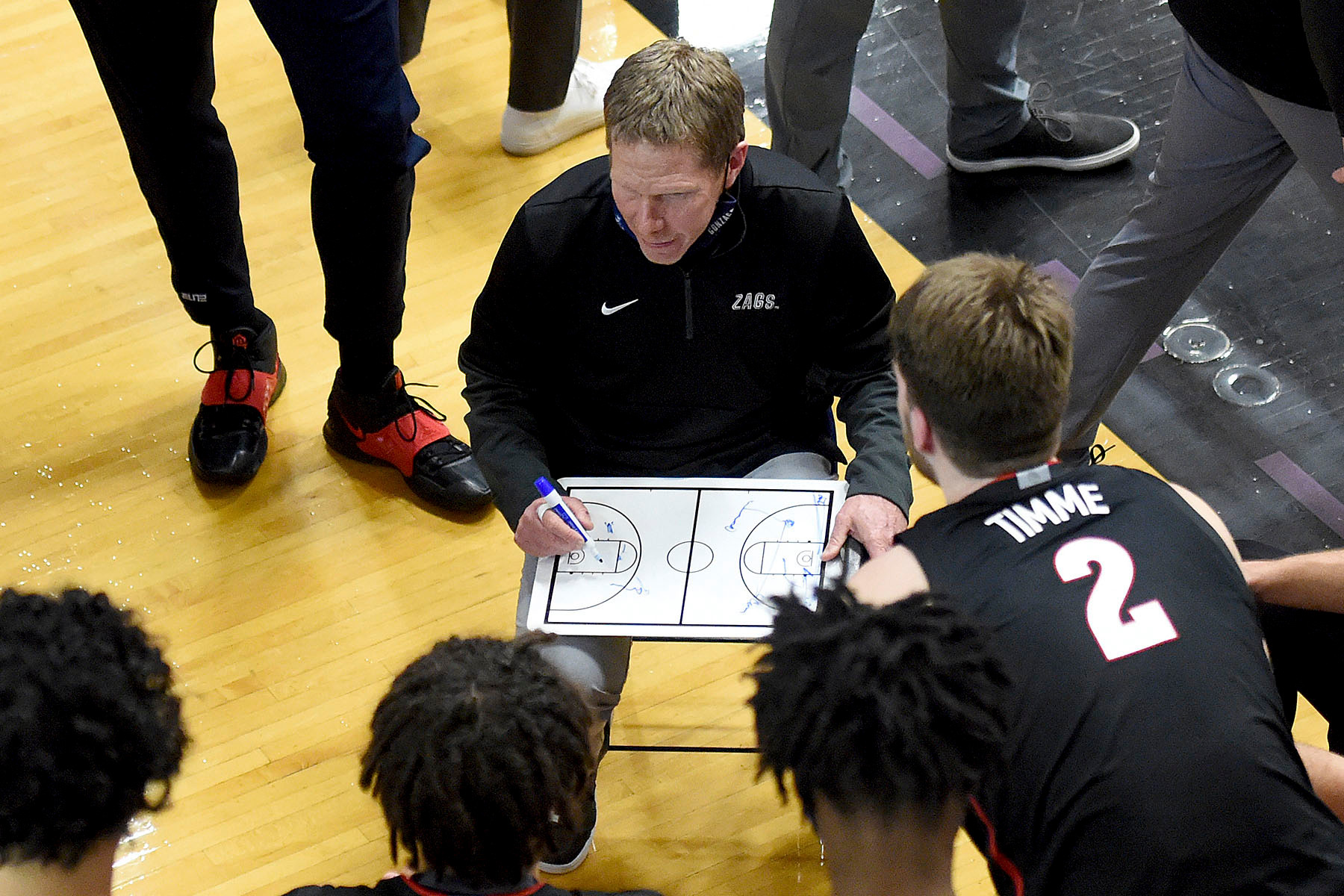
“Our comptroller said, ‘Why aren’t we Division III? What are we getting out of being Division I? We’re spending all this money,’” Roth said. “I said, ‘The difference is if we’re Division III and we do something special, it’s barely local news. If we do something really special with Division I, especially with men’s basketball, that’s national news. And you can’t put a price tag on that.’
“And somehow it happened.”
Somehow, Gonzaga hasn’t missed the NCAA Tournament since that Clinton-era conversation. Somehow, Mark Few, a head coach with no previous experience, has spent two decades compiling the best winning percentage in the history of the sport. Somehow, it’s not surprising a one-and-done phenom such as point guard Jalen Suggs considers Gonzaga the best NBA training ground.
Somehow, an isolated and ignored mid-major morphed into the most unlikely juggernaut in American sports. Somehow, Gonzaga (26-0) is again the No. 1 team in the nation, six wins from completing the first undefeated men’s season since 1976. Somehow, Gonzaga is the NCAA Tournament favorite for the first time, attempting to become the first team outside a power conference to win the national title since 1990.
Somehow, this happened.
“We continue to remind our staffs on a regular basis how special this is because some of us were here when nobody knew Gonzaga existed and the NCAA Tournament was a pipe dream,” Roth said. “We weren’t even a regional place. We were barely a Spokane place. I get contacted a lot by different institutions and have had other [athletic directors] fly in to meet with me and say, ‘We want to do what you’re doing’…Because of our uniqueness that we’re not in a power six conference, it’s never been done. There’s times where I wonder if it can be replicated at other places.
“The majority of our fans — and the nation — only know Gonzaga since 1999, but the history part of it is what makes it special. We weren’t bequeathed anything. No one gave us anything. To me, it’s the great American story.”
The location seemed ideal.
A new general store brought a flood of settlers to Spokane Falls in 1878, and three years later, the triple-digit population of the newly incorporated city was certain to skyrocket with the arrival of the Northern Pacific Railroad. It would require just $936 and some imagination to acquire 320 acres of land along the Spokane River, enabling a new university to serve the surrounding Jesuit missions in Idaho, Montana and eastern Washington.
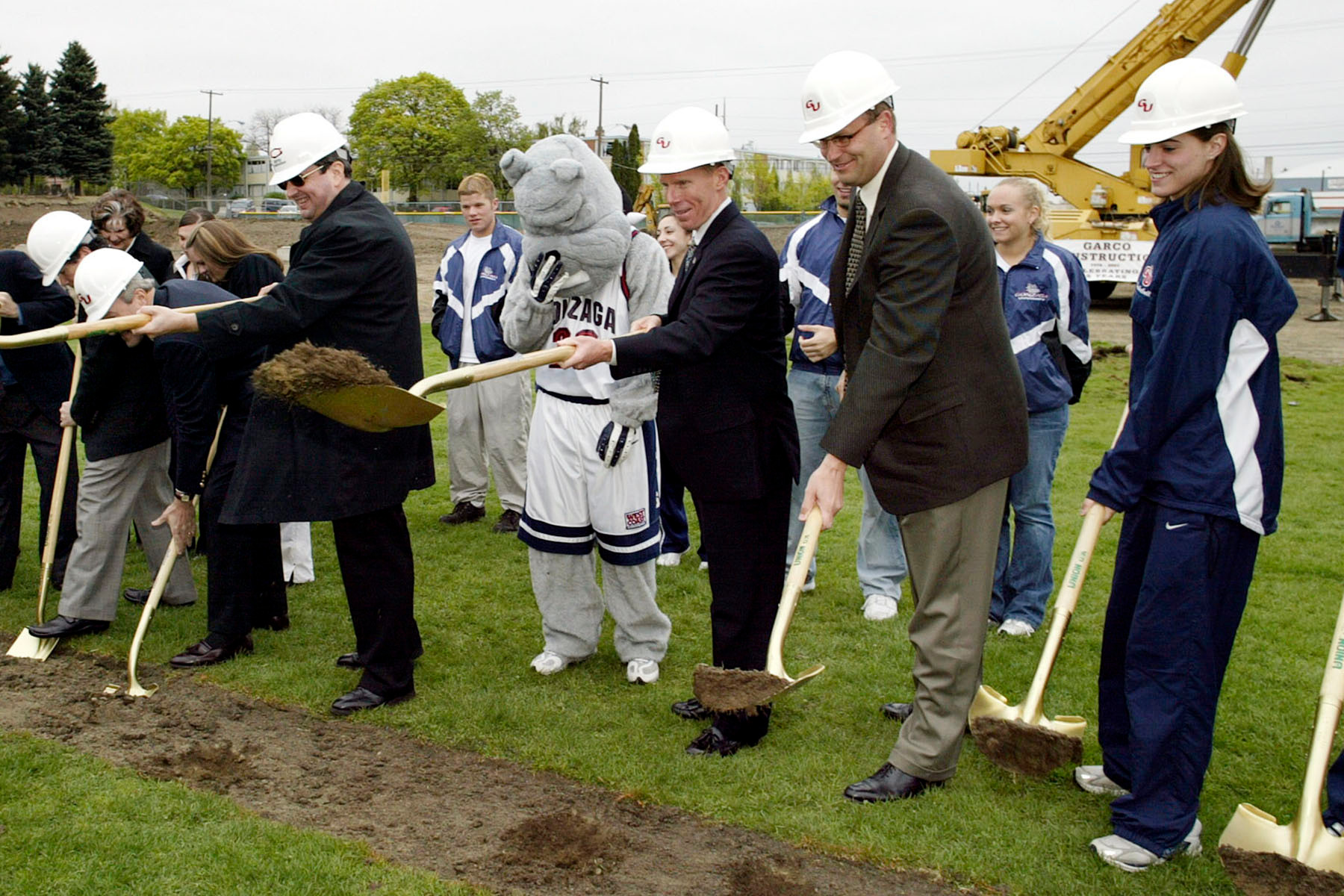
There, the Gonzaga campus sat on the quiet side of the Cascade mountains, still in need of introductions with the locals a century later.
“We were an isolated community, and when we’d go to Seattle and the other side of the state to recruit a kid, they’d say, ‘I thought that was a high school,’ because the Gonzaga Prep football team was so good,” said former Gonzaga basketball coach Jay Hillock (1981-85). “I’d be like someone shot in the heart with an arrow. I’d say, ‘What the hell am I doing here?’”
It was a stepping stone, a coaching résumé enhancer. It was the kind of program that would offer Few — a 26-year-old high school assistant in his native Oregon — a graduate assistant job in 1989. Then-Gonzaga assistant Dan Monson made the recommendation, having seen Few’s dedication at Monson’s father’s basketball camp — and after hours.
“We went really hard there, working the camp until 9 at night and then go to the bars until 2 or 3 in the morning. Sometimes we’d then go golf when it turned light at 4:30, then go back to camp at eight and act like it’s just another day,” Monson said. “It was a badge of honor how little sleep you could get and how hard you could work at that camp.”
Initially, Few declined Gonzaga’s offer. A $5,000 annual salary — “Mark will still tell you it was $500,” Monson said — wasn’t enough. Other candidates agreed.
Monson circled back to Few, closing the deal by offering a rent-free room in his apartment.
“Mark and Marcy even lived with me the first year they were married to save up money,” Monson said. “It was a unique building of a program. We spent 24/7 together. Even once we got there, it was like camp again. We’d make recruiting calls until five or six, and then go out to dinner and play tennis together and start the next day. We’d get tired of each other, but not enough to not keep doing it.”
It wasn’t always fun. Few’s first three years as an assistant produced a series of losing records, including the program’s worst season in four decades (1989-90), when the Zags went 8-20 and ranked 230th in the nation in attendance (1,960 fans per game).
“Four of those were non-DI [wins]. How about that?” said Few, now 58. “We basically won four Division I games.”
Though Few now believes he has the best job in the country, his former boss, Dan Fitzgerald, considered it the worst job in the West Coast Conference.
“He’d say, ‘If we can get to .500, then we’d more than done our job,’” Few said. “Dan and I grimaced whenever we heard that.”
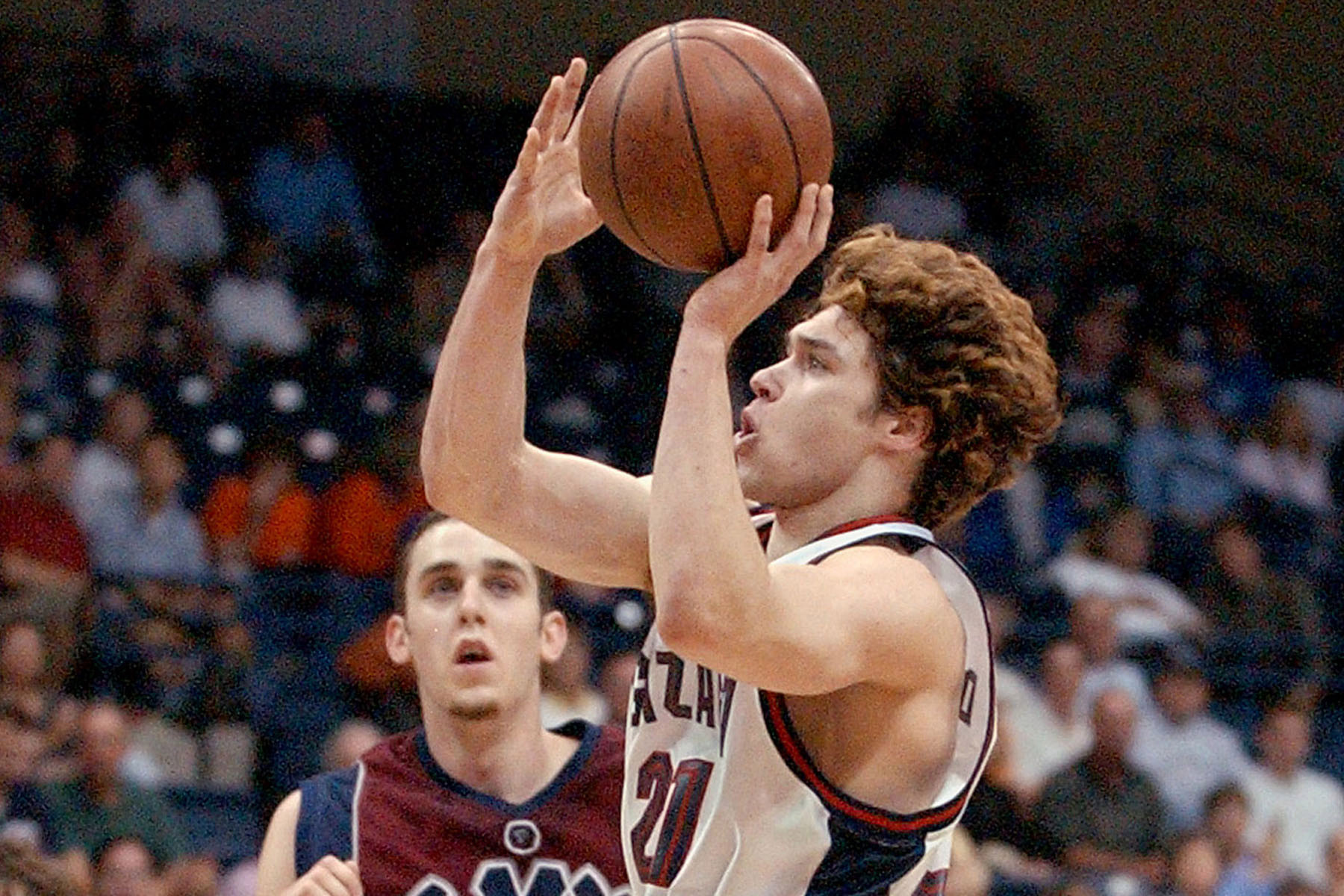
But facts are an intimidating foe.
“Other places all had better players and better weather, and besides Saint Mary’s, everyone had better facilities,” Monson said. “We’d go out on the road for two, three weeks at a time to recruit and have to sleep on floors and borrow people’s cars.
“[Fitzgerald] felt we were wasting our time if any Pac-10 team had called a recruit. Mark and Fitz really butted heads about that. He would be so spiteful that he wouldn’t recruit a kid unless the Pac-10 was recruiting them. His mindset was contagious that way. Mark was headstrong and he had the ability to convince kids that they were crazy to go anywhere else, especially Pac-10 schools where they were gonna sit on the bench. He would doom and gloom them into submission or you could come here and be a featured player.”
Now, the Bulldogs behave like the elite, enjoying the luxury and convenience of private charter flights. In the less fortunate times, the team just hoped to reach the runway on time. They just hoped to be important enough for the school’s maintenance staff to remember them.
“We’d take the bus up the hill out of town to get to the airport and sometimes it’d break down,” Hillock said. “After Christmas, the heat wouldn’t be on because they forgot about us, so the guys would practice in hoodies and long sleeves.”
Now, Gonzaga reaps millions from Nike. For so long, the school relied on hand-me-downs.
“To me, it’s the great American story.”
Athletic Director Mike Roth on the rise of Gonzaga
“I wore No. 13 because they only had 13 and 15 available. I got used sweatpants that were No. 2,” said former guard Matt Santangelo (1996-2000). “You had to literally have holes in your sneakers before you could get a new pair. I got more gear doing radio for Gonzaga than I ever did as a player.”
The school’s first NCAA Tournament appearance came in 1995. In Monson’s second season as head coach in 1999 — when Gonzaga paid a local network to broadcast its games — the Bulldogs returned as a 10-seed.
“We didn’t know what to do. It was such a big deal,” Santangelo said. “We were just happy to be there.”
Opening in Seattle, Gonzaga took down a Minnesota team decimated by academic suspensions, then toppled No. 2 Stanford. Less than a year after Gonzaga had debated the merits of Division I athletics, Casey Calvary’s tip-in with 4.4 seconds left against Florida sent the school to the Elite Eight.
“Spokane is going nuts, the nation is going nuts and I get a call from our comptroller,” Roth said. “He says, ‘Mike, I get it now.’ ”
After a last-minute loss to eventual champion UConn ended Gonzaga’s Final Four hopes, a bidding war began. Monson spurned offers from Washington State and San Diego State. Twice, he turned down Minnesota.
Monson agreed to a significant raise and extension at Gonzaga, paying $105,000 per year. Then, Minnesota morphed into a Corleone, offering $490,000 per season for seven years.
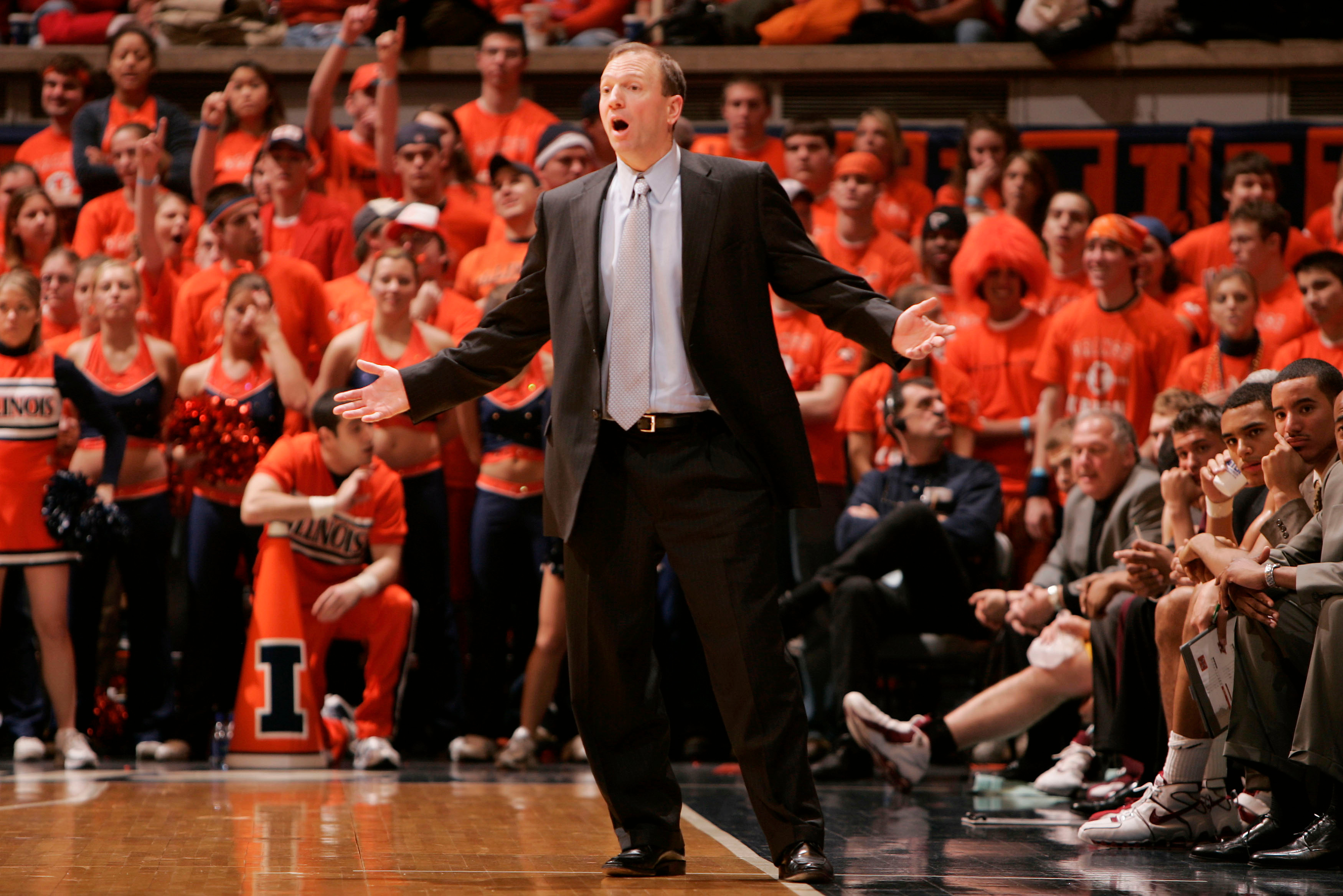
“I never regretted taking it. I was getting married in two weeks. You think, you’re 37 years old, starting a family, and it’s gonna take [10] years at Gonzaga to make what I would at Minnesota in two,” said Monson. “You look at the situation, you look at the league and no one sustained a run.”
It’s the mid-major’s plight. Loyola-Marymount hasn’t danced since Bo Kimble honored Hank Gathers. George Mason has won one NCAA Tournament game since its 2006 Final Four run. Florida Gulf Coast hasn’t won a tournament game since Dunk City was born. The same for Davidson, since America met Steph Curry.
Gonzaga was no different. When Few was promoted to the head position at $75,000 per season, university President Robert Spitzer — fretting over Monson’s departure — didn’t even know the difference between the team’s assistant coaches.
“I said, ‘Father, slow down, it’s done. Mark Few is our next head coach.’ He goes, ‘Oh, OK, good. Which one is he?” Roth recalled. “When we made the decision to make Mark the next head coach, there were people who were like, ‘What? What’s going on?’ Mark had never coached a game in his life as a head coach. Was there risk there? Oh for sure. There was huge risk.”
Few took over, and the newly famous school welcomed its largest freshman class ever. The dorms were fully occupied, so the university had to rent rooms for students at the nearby Kavanaugh Rivers Inn. After Few led the Zags to back-to-back Sweet 16 appearances in his first two seasons, the Flutie effect — coined after the Heisman Trophy winner’s celebrity sparked similar popularity at Boston College — was in full effect.
Since 1999, Gonzaga’s budget, endowment and annual applications have grown over 300 percent. Enrollment has nearly doubled. The team has sold out every game in the McCarthey Athletic Center, opened in 2004. A sparkling $24 million practice facility was added in 2018.
And Gonzaga wasn’t sure it belonged in Division I.
“They saved the school, when it was teetering on bankruptcy,” Hillock said. “Those Seattle and Portland kids thought they were too good to come east. Now, they’re turning people away.”
Dan Dickau was drawn by the ’99 run, transferring from Pac-10 mainstay Washington to become Gonzaga’s first-ever First Team All-American in 2002. Four years later, Adam Morrison was a national phenomenon, leading the land in scoring.
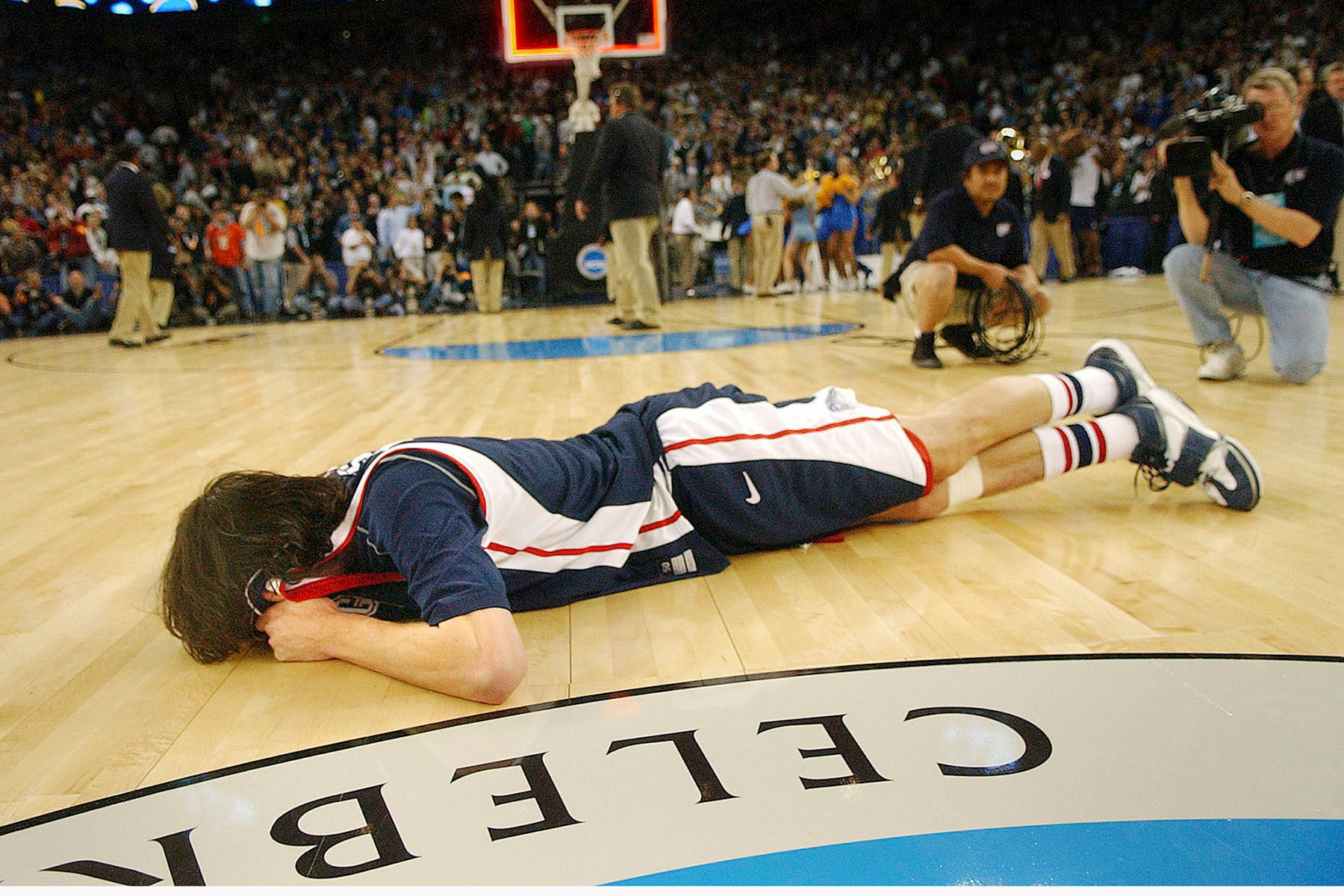
The program built through player development, through assistant Tommy Lloyd’s international recruiting prowess, through the overlooked and underappreciated. By 2013, Gonzaga was the No. 1 team in the country for the first time, turning Cinderella into her stepmother during a tight first-round game against Southern in Salt Lake City — “We’re in John Stockton’s arena and the whole place turned against us, booing them, saying they’re overrated, because they really wanted to see the 16-1 upset,” Santangelo said — and unceremonious second-round exit.
In Few’s 18th season, the Bulldogs finally reached the Final Four, holding a 37-1 record and a lead with less than two minutes left in the 2017 national title game, before losing to North Carolina.
Gonzaga was the WCC’s first national title game participant since Bill Russell led San Francisco to a national championship in 1956.
“Right, wrong or indifferent, it probably legitimized us in some kids’ eyes,” said Few, the first AP Coach of the Year from the conference in 40 years. “Where before, we needed that final notch in our belt.”
Gonzaga is the only team to reach the Sweet 16 of the past five NCAA Tournaments. It is tied for the nation’s longest streak with at least one tournament win in 11 straight seasons. Its 22-year NCAA Tournament streak has only ever been topped by Kansas, Duke, North Carolina and Michigan State.
“We haven’t even peaked yet. That’s where you scratch your head. We’re first-generation wealth and still trying to figure out how we got rich,” Santangelo said. “You can’t call them a mid-major. They’re definitely not Cinderella anymore. They had to create their own category.”
They had to keep the most indispensable coach in the country, whose salary could at least triple elsewhere. They had to stumble into a leader who enjoys a relatively low profile with his wife and four children, who finds bliss in the natural wonders of the Inland Northwest, who has sped past countless eye-catching exit signs because he believed he could make as much noise on the quiet side of the Cascades.
“I’d hate to add up all the schools over the years that have offered him more money and everything else because they have more resources,” Roth said. “When it comes down to these other schools chasing him, it hasn’t stopped. There’ve been really blue blood schools that have come knocking, telling Mark, ‘Name your price. Literally. Our benefactors will pay it.’ One was going to build him a trout stream, seriously, because everyone knows Mark loves to fish.
“We’re the longest-tenured AD-basketball coach combo in the country and one of the reasons that’s the case is because we share the same vision. We believe we can do this at Gonzaga. I don’t have to go to a Big Ten school or Pac-12 school. Mark doesn’t have to go to the SEC or the ACC to do what we do at Gonzaga. It goes back to fit and Mark fits here. He’s gonna stay until he’s done, which is my guess.”
Few could have left for Arizona or UCLA or Oregon, where he earned a degree and his parents lived 10 minutes away. But the son of a Presbyterian minister knew he couldn’t best perfection.
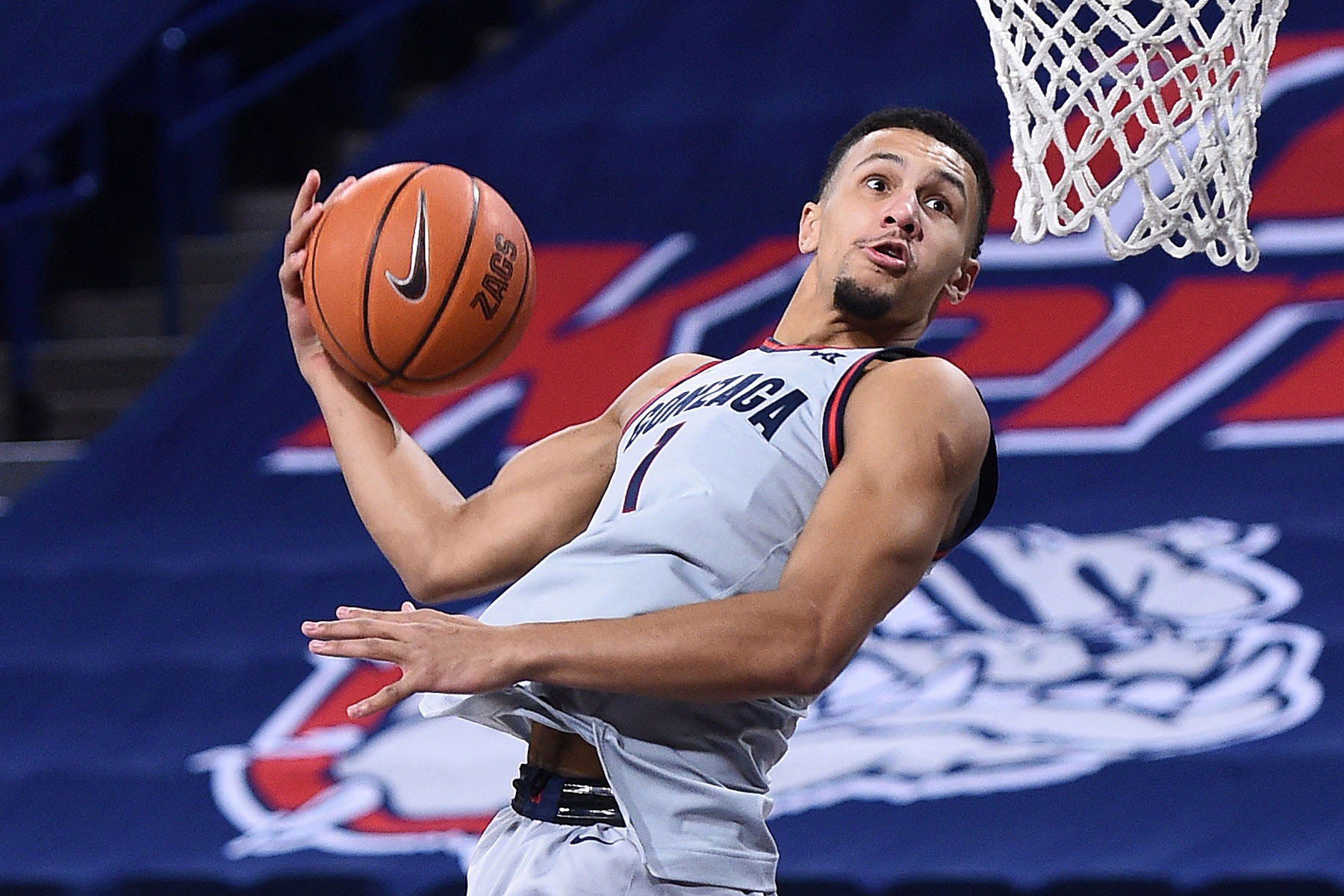
“I take credit for that because he saw how Minnesota didn’t work out and that was such a struggle,” said Monson, the head coach at Long Beach State since 2007. “Gonzaga did such a great job of giving him whatever he needed to succeed — a new arena to training to private plane for travel — and then it became, why should he leave? When I left, they knew it was gonna keep happening unless they did something. I think if I would’ve stayed there, I’m not sure they would have recognized that.”
Opposing administrators still come to Spokane, asking for Gonzaga’s secret. Borrowing Hendrix’s guitar won’t help you capture his sound.
“It is the anomaly of all anomalies,” Hillock said of Few’s success. “I don’t think Coach K could’ve done it. I don’t think Roy Williams could’ve done it. First of all, they wouldn’t have stayed.”
Pre-COVID, former players were a constant presence at Gonzaga. Dozens live near campus. Morrison and Dickau work in broadcasting. Richie Frahm and Derek Raivio work in real estate. Blake Stepp and Cavalry work in sales. Several more are regulars at Stockton’s invite-only, shirts-and-skins pickup games.
“There’s probably 40 to 50 guys who didn’t grow up in Spokane, but have made it their home,” Santangelo said. “We have a tremendous network.”
During the school’s Final Four appearance in 2017, Few invited numerous former players and coaches to a team film session, featuring guest speaker Kobe Bryant. Instead of closing with the standard highlights of current players to get amped up the night before a game, clips were inserted of the campus legends who enabled the unimaginable.
“Our guys got into it and were hooting and hollering for these old, grainy clips,” Few said. “Then the former group lined up in this giant ballroom, and player by player, I sent my guys through that. They high-fived and shook hands and they treated those guys like kings. It was probably the most powerful moment in my whole career.”
Because of them, Przemek Karnowski grew up in Poland, looking at Gonzaga like a traditional power.
“They put the work in when Gonzaga wasn’t a Top 25 team,” said Karnowski, the starting center on the ’17 team. “We just carried their legacy.”
Monson begins laughing, as he recounts the evening. Then, he begins crying.
“Mark said, ‘This was built brick by brick. This was a product of 20 years of people,’” Monson said. “We walked in and they gave us a standing ovation. That’s why that program is where it is. Nobody forgets where they came from. The culture is the same as when I was there. They’re so thankful and appreciative of everything they’ve got. … The freshmen still put the bags on the plane for everyone and wait and help the airplane staff. It’s still a mom-and-pop store in a lot of ways that’s kept it where it is. They’ve turned into Microsoft, but the culture isn’t that way.”
The pandemic prevented a 31-2 juggernaut from ever knowing whether it would have captured Gonzaga’s first national title. But the country’s best team got better, bringing back potential lottery pick Corey Kispert, plus future NBA draftees Joel Ayayi and Drew Timme. It welcomed Suggs — the highest-rated recruit (No. 6 in the nation) in Gonzaga history — Florida transfer Andrew Nembhard and top-100 recruits Dominick Harris and Julian Strawther.
Gonzaga’s recruiting pitch has never been simpler. The program is the favorite to land Suggs’ former Minnehaha (Minn.) Academy teammate, Chet Holmgren, the nation’s top-rated 2021 recruit. When Suggs signed up to be Gonzaga’s second-ever one-and-done player (Zach Collins, 2017), the Bulldogs were the No. 1 team in the country.
“It was OK to go to Gonzaga now,” Few said. “It was cool to go to Gonzaga.”
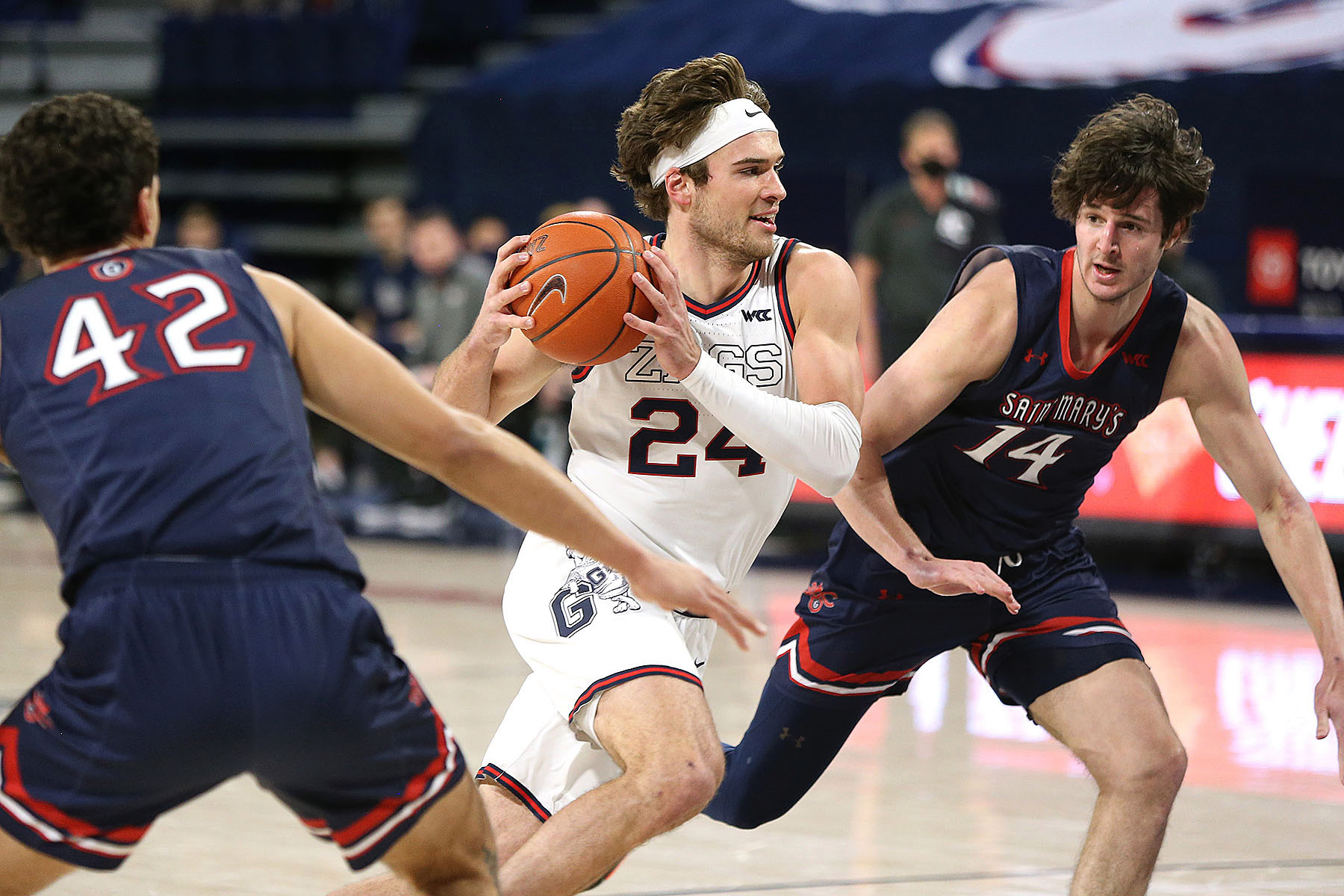
It wasn’t cool when Stockton was selected 16th overall in 1984, when Jazz fans booed the anonymous player from the frequently mispronounced school. It wasn’t cool when Morrison was hysterically crying on the floor after a Sweet 16 meltdown or when 16 years passed between Elite Eight appearances.
But it’s easy to be chic after a trip to the Final Four. It’s easy to be admired when no other team has touched the No. 1 ranking this season, when no team scores more (92.1 points per game) or shoots better (55.1 field-goal percentage).
The Zags have won 51 straight home games. They’ve won a record 23 straight games by double-digits, topping Bill Walton and John Wooden’s 1971-72 undefeated UCLA title winner to set the longest streak in at least 60 years.
“Hands down, this year is the greatest team that coach Few’s ever had,” Santangelo said. “This team is so much fun. They share the ball, they play fast, they defend, they have weapons everywhere. They make it look so easy. We are all head over heels in love with this group.
“We will legit be disappointed if we don’t win a national championship at Gonzaga University. Saying that sentence out loud doesn’t make sense.”
Gonzaga is the fifth team since Bobby Knight’s ’76 Hoosiers to enter the NCAA Tournament unbeaten, but it nearly arrived in Indianapolis as just another 1-seed.
BYU led Gonzaga by 14 in Tuesday’s West Coast Conference title game. The Orleans Arena in Las Vegas was empty, but the sound of keyboards across the country produced a familiar tune, labeling the kings of the mid-major conference overrated again.
Gonzaga responded with poise and power and precision. The team returned to its locker room with greater appreciation of the opportunity ahead. The season can end this week — or outlive them all.
“We finally acknowledged this is a big deal,” Few said. “It puts us in some incredible company.”
Before reaching the summit, mountain climbers must pass through the death zone. Countless become casualties with triumph so close. It’s hard to enjoy the view with survival and success at stake.
It’s easier when you remember starting the ascent in secondhand sweatpants.
“The work, the total value of the entire process, to be able to be here 30 years ago, rather than bouncing around — there were a lot of opportunities, some offers that I looked at harder than other things — it’s so cool to see it go from ground zero all the way up to where it is,” Few said. “There’s definitely some satisfaction with that, but also the grounding of it for me. That’s where the “national championship or bust,” I don’t buy into that.”
Every season, it grows a little louder on the quiet side of the Cascades. Gonzaga has just one more introduction to make.
“Obviously [a national title is] important. Mark’s a competitor. But the best thing about him is his perspective,” Monson said. “He’s gonna be OK if they don’t. It’s not gonna ruin his summer. He’s still gonna go fishing. He’s still gonna take his kids skiing to Hayden Lake. He’s chosen his lifestyle over his career many, many times. But that perspective, that confidence, is why I think he’s gonna get it. I think they’re gonna go undefeated and win it all.”
This story originally appeared on: NyPost - Author:Howie Kussoy














